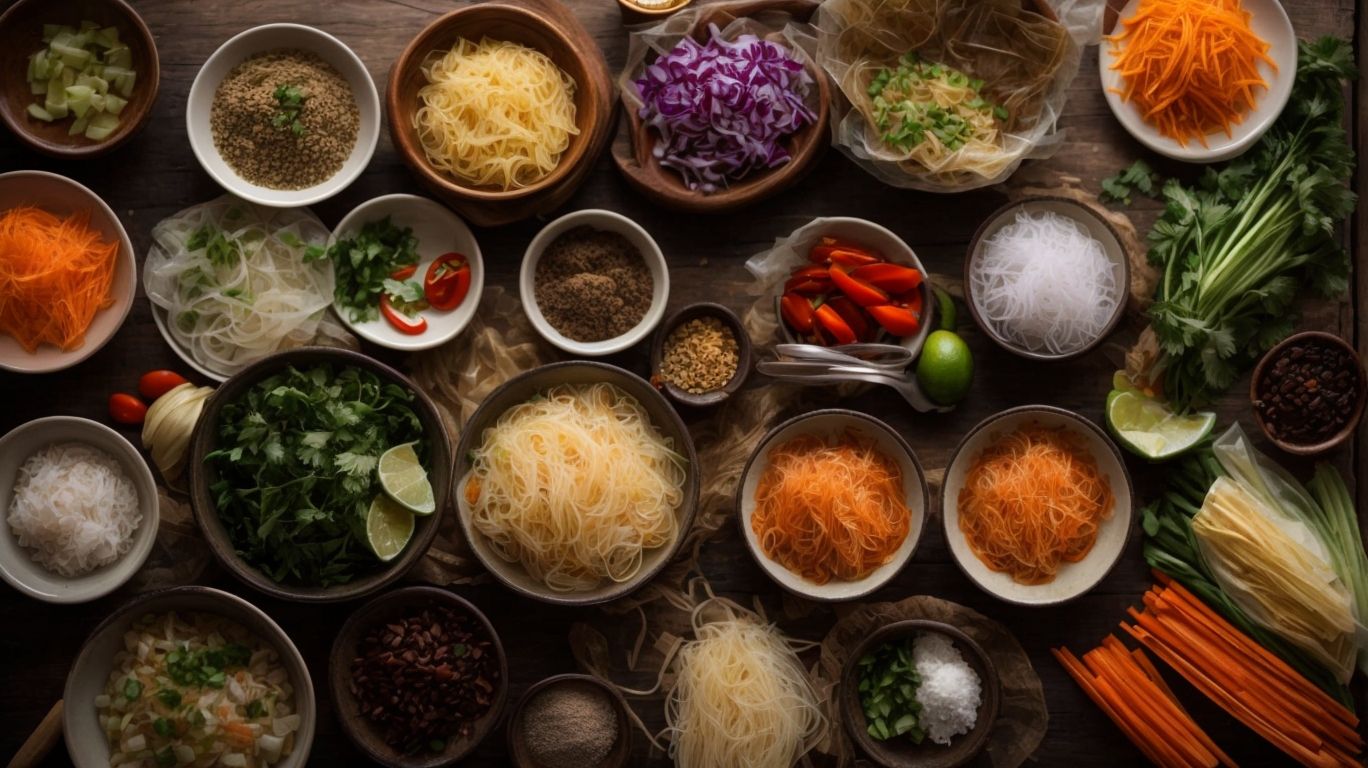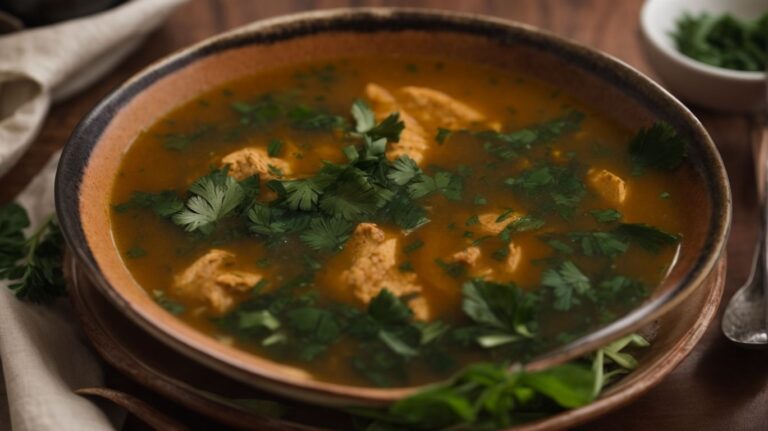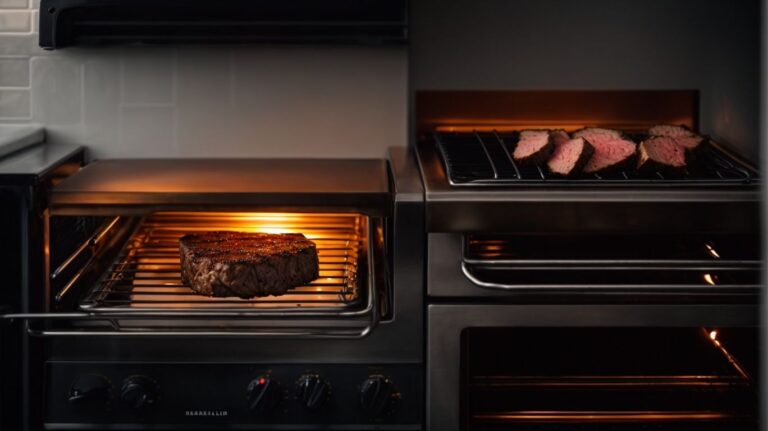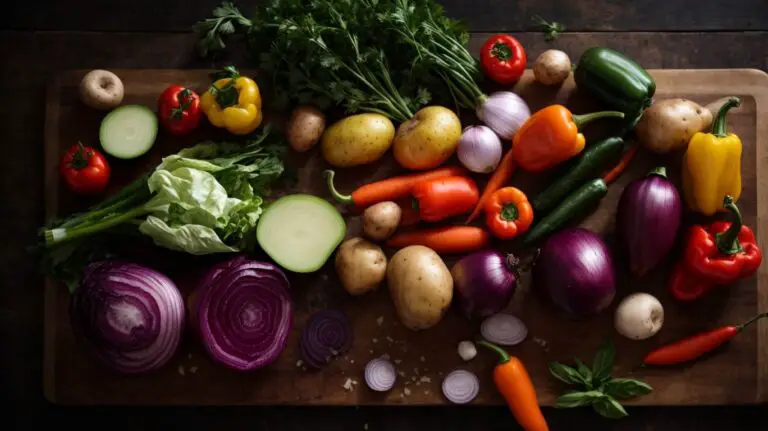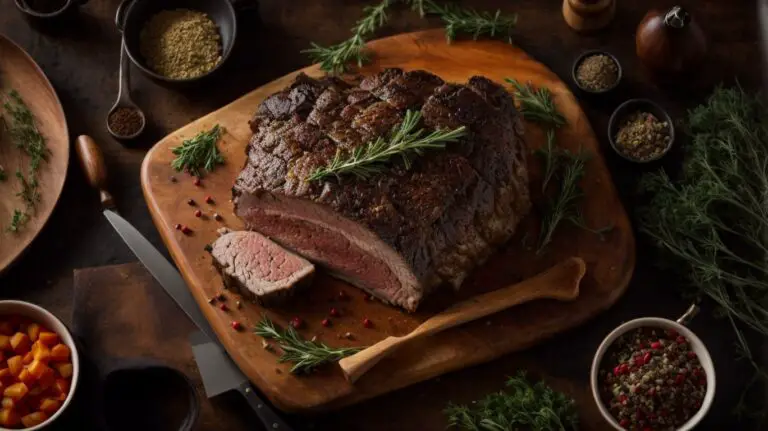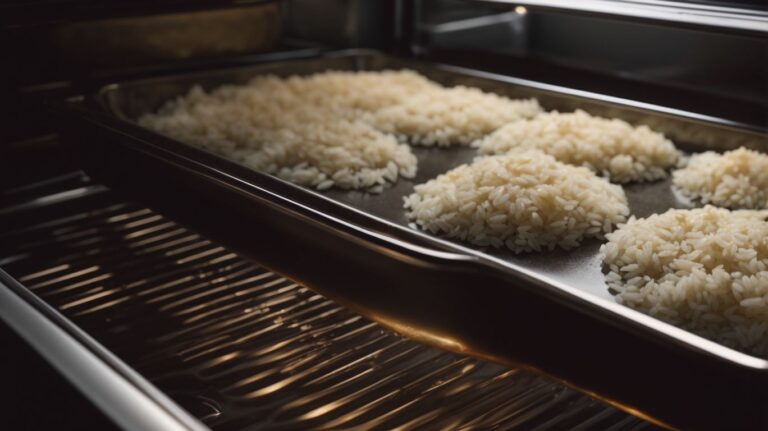How to Cook Vermicelli Noodles for Rice Paper Rolls?
Are you a fan of Vietnamese cuisine or looking to try something new in your kitchen?
Explore the delightful world of Vermicelli noodles and Rice Paper rolls in this article.
Discover what these ingredients are, the main and optional ingredients needed, step-by-step instructions on how to prepare the noodles and assemble the rolls, and finally, how to serve and enjoy this delicious dish.
Get ready to tantalize your taste buds with this fresh and flavorful recipe!
Key Takeaways:
About Vermicelli Noodles and Rice Paper Rolls
Vermicelli noodles and rice paper rolls are integral components of Vietnamese cuisine, offering a delightful combination of flavors and textures.
These staple ingredients play a significant role in the culinary landscape of Vietnam, showcasing the country’s vibrant culinary tradition. Vermicelli noodles, known as ‘bún’ in Vietnamese, are typically made from rice flour and are used in a variety of dishes such as the iconic Bun Cha and Bun Bo Nam Bo. On the other hand, rice paper rolls, or ‘gỏi cuốn,’ are versatile wraps filled with various ingredients like shrimp, pork, herbs, and vegetables.
The preparation methods for these dishes are steeped in tradition and precision, reflecting the meticulous approach Vietnamese cuisine is known for. Vermicelli noodles are often served cold with fresh herbs, pickled vegetables, and a savory dressing, creating a refreshing and light meal. Similarly, rice paper rolls are assembled by placing the fillings onto a moistened rice paper sheet, rolled tightly, and served with a dipping sauce that adds a burst of flavor.
What Are Vermicelli Noodles?
Vermicelli noodles, often made from rice, are thin, translucent noodles that are a staple in Vietnamese cuisine, known for their versatility and ability to absorb flavors.
These noodles are typically used in dishes such as bun cha, a traditional Vietnamese dish with grilled pork, fresh herbs, and a tangy dipping sauce. Vermicelli noodles are also integral in pho, a beloved Vietnamese soup, where the delicate strands soak up the rich broth and complement the hearty toppings of meat and herbs.
Aside from Vietnamese cuisine, vermicelli noodles are widely used in various Asian recipes, like stir-fries, spring rolls, and salads, adding a light and satisfying texture to the dishes. Their quick cooking time and ability to blend seamlessly with different ingredients make them a popular choice for creating delicious and visually appealing meals.
What Are Rice Paper Rolls?
Rice paper rolls, also known as summer rolls or fresh rolls, are a popular Vietnamese dish consisting of fresh vegetables, herbs, and protein wrapped in delicate rice paper.
These rolls are a staple in Vietnamese cuisine and are loved for their refreshing taste and customizable nature. The key ingredients commonly found in rice paper rolls include vermicelli noodles, shrimp, pork, and a variety of fresh herbs like cilantro, mint, and basil. To roll a perfect rice paper roll, it’s important to wet the rice paper first to make it pliable, then place the fillings neatly in the center, fold the sides in, and roll tightly.
Common dipping sauces for rice paper rolls include hoisin sauce, peanut sauce, soy sauce, or a spicy fish sauce. Each sauce adds a unique flavor dimension to the rolls, enhancing the overall experience.
Ingredients Needed for Vermicelli Noodles and Rice Paper Rolls
To create delicious vermicelli noodles and rice paper rolls, you will require a variety of fresh ingredients such as rice noodles, shrimp, lettuce, herbs, and flavorful sauces.
Along with these core ingredients, it’s essential to have high-quality rice paper, which serves as the base for the rolls, providing a delicate and chewy texture that complements the fillings. Fresh vegetables like cucumber, bean sprouts, and carrots not only add crunch but also contribute to the vibrant colors of the dish, making it visually appealing.
- Don’t forget a protein source, such as grilled chicken or tofu, for a satisfying and balanced meal.
- For flavor infusion, include ingredients like lemongrass, mint, and peanuts, giving the dishes a refreshing and aromatic twist.
What Are the Main Ingredients?
The main ingredients for vermicelli noodles and rice paper rolls include fresh shrimp, crisp lettuce leaves, flavorful hoisin sauce, creamy peanut butter, aromatic garlic powder, crunchy crushed peanuts, delicate rice paper wrappers, and a delectable dipping sauce.
Let’s delve deeper into the unique characteristics of these key components.
- The fresh shrimp adds a succulent and savory seafood element to the dish, perfectly complementing the textures and flavors of the other ingredients.
- The crisp lettuce leaves not only provide a refreshing crunch but also a lightness that balances the richness of the sauces and peanut butter.
- The flavorful hoisin sauce brings a sweet and tangy taste, enhancing the overall umami profile.
- The creamy peanut butter adds a creamy nuttiness, creating a luscious coating for the noodles and vegetables.
- The aromatic garlic powder infuses a subtle yet distinctive garlicky aroma to the dish, elevating its flavor profile.
- Meanwhile, the crunchy crushed peanuts offer a delightful textural contrast and a burst of nuttiness with every bite.
- The delicate rice paper wrappers play a crucial role in encasing the ingredients, adding a soft and chewy texture while allowing the vibrant colors of the fillings to peek through.
- And, of course, the delectable dipping sauce ties everything together by providing a final burst of flavor that enhances the entire eating experience.
What Are Some Optional Ingredients?
Along with the main ingredients, optional additions for vermicelli noodles and rice paper rolls can include rice noodles, fresh bean sprouts, fragrant cilantro, premium Three Ladies Brand products, assorted vegetables, aromatic herbs, buttery lettuce, and flavorful dipping sauces.
Adding a squeeze of fresh lime juice can elevate the dish by providing a tangy zing that complements the noodles and vegetables perfectly. Alternatively, a sprinkling of crushed peanuts adds a delightful crunch and nutty flavor.
For those seeking a spicy kick, thinly sliced red chili peppers or a drizzle of sriracha sauce can introduce a fiery element that balances the dish’s freshness.
Including a handful of cooked shrimp or slices of tender grilled chicken can transform the rolls into a satisfying meal, offering a protein-rich addition that enhances the overall texture and heartiness of the dish.
Preparing the Vermicelli Noodles
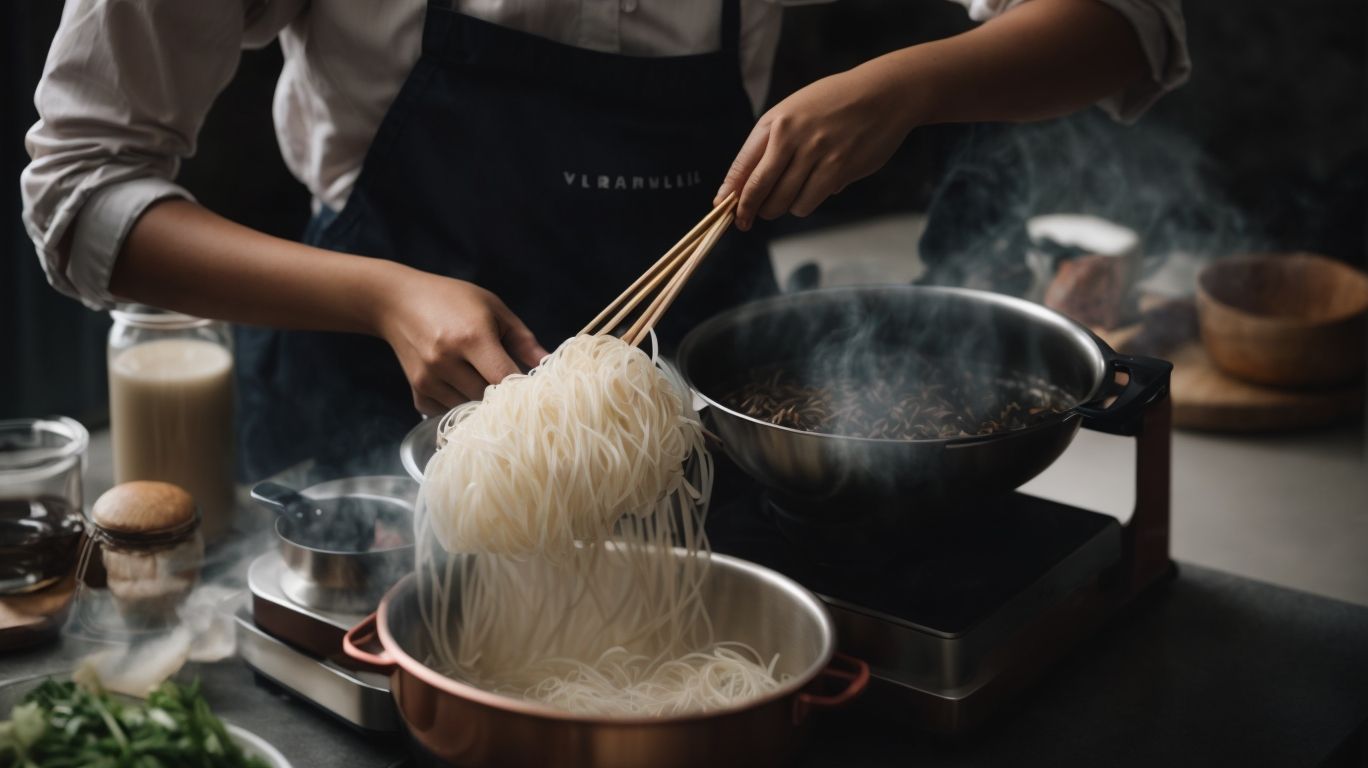
Credits: Poormet.Com – Vincent Moore
The process of preparing vermicelli noodles involves soaking the rice noodles, boiling them to perfection, and then cooling and draining them before incorporating them into the dish with an array of fresh vegetables, herbs, and nước chấm sauce.
Before beginning the soaking process, it is imperative to choose the right type of vermicelli noodles. Whether using thin or thick noodles, the key is to ensure they are fully submerged in lukewarm water for about 15-20 minutes until they soften.
Once the noodles have reached the desired texture, transfer them to a pot of boiling water. Boil them for just a few minutes, making sure not to overcook them as they can quickly turn mushy.
After boiling, the noodles should be promptly drained and rinsed with cold water to stop the cooking process and prevent sticking. It’s essential to handle them gently during this phase to maintain their delicate texture.
Step 1: Soaking the Noodles
The first step in preparing vermicelli noodles is to soak the rice noodles in lukewarm water until they reach a tender yet slightly firm consistency, allowing them to absorb moisture and soften for further cooking.
For the ideal soaking process, the water temperature should be around 110-120°F to facilitate the softening of the noodles without overcooking them. Typically, vermicelli noodles need to soak for about 5-7 minutes to achieve the desired texture. The noodles should appear pliable and easy to bend but still maintain a slight chewiness when bitten. This soaking duration helps to rehydrate the rice noodles evenly, ensuring they cook uniformly when added to dishes like stir-fries, soups, or salads.
Step 2: Boiling the Noodles
Once the rice noodles are adequately soaked, the next step involves boiling them in a pot of water until they achieve a soft and chewy texture, ensuring they are cooked but not overdone for the dish.
Boiling vermicelli noodles requires attention to detail to achieve that perfect consistency. Bring a pot of water to a rolling boil, then gently add the noodles, ensuring they are fully submerged. It is crucial to stir occasionally to prevent clumping and sticking to the bottom.
The cooking process typically takes around 3-5 minutes, but it’s essential to taste test for doneness. The texture should be firm to the bite, known as ‘al dente’, indicating they are fully cooked but still slightly firm.
To prevent overcooking, immediately drain and rinse the noodles with cold water once they reach the desired texture. This step halts the cooking process and ensures they remain at the perfect consistency for your dish.
Step 3: Draining and Cooling the Noodles
After boiling, the vermicelli noodles should be drained and rinsed under cold water to halt the cooking process and cool them down, preventing clumping and ensuring they are ready for incorporation into the final dish.
Once the noodles are drained, gently rinse them in a colander under a steady stream of cold water. This will not only stop the cooking but also remove excess starch, which can lead to stickiness. Rinsing them thoroughly ensures a perfect texture.
Next, allow the noodles to cool completely before using them in your recipe. You can spread them out on a large plate or tray to speed up the cooling process. Cool noodles are easier to handle and mix with the other ingredients.
Assembling the Rice Paper Rolls
Creating rice paper rolls involves a delicate process of soaking the rice paper, adding a flavorful filling of shrimp, lettuce, herbs, and other ingredients, and meticulously rolling the paper to encase the fillings neatly.
Before assembling the rice paper rolls, immerse the rice paper sheets in warm water for about 10-15 seconds until they become pliable but still slightly firm. Pro tip: Be careful not to soak them too long as they can become too soft and tear easily. Next, lay the softened rice paper on a clean surface and start layering your desired fillings, arranging them neatly along the center of the sheet. Common additions include vermicelli noodles, avocado slices, and bell peppers for a burst of color and flavor.
Step 1: Soaking the Rice Paper
The initial step in assembling rice paper rolls is to soak the delicate rice paper sheets in warm water until they become soft and pliable, making them suitable for wrapping the fillings without tearing.
When soaking the rice paper, it is crucial to use lukewarm water, as hot water may cause the sheets to break down quickly, while cold water might not soften them adequately.
Typically, a bowl filled with warm water works well for this process. The sheets need to be fully immersed in the water, but not left in for too long to prevent them from becoming overly mushy.
Striking the right balance in soaking time is key – usually around 15-30 seconds, just until the sheets are pliable yet still slightly firm for easier handling.
Step 2: Adding the Filling
Once the rice paper is soft, it’s time to add a harmonious blend of shrimp, crunchy lettuce leaves, flavorful hoisin sauce, creamy peanut butter, crushed peanuts, assorted vegetables, fragrant herbs, and a delectable peanut sauce as the filling for the rolls.
Begin by placing a shrimp at the bottom of the rice paper, followed by a layer of crunchy lettuce leaves for texture. Next, drizzle some hoisin sauce for a burst of sweetness, then smear a dollop of creamy peanut butter for richness. Sprinkle some crushed peanuts for a delightful crunch and add an array of assorted vegetables like crispy carrots, bell peppers, and cucumbers for a colorful touch.
Top it off with an assortment of fragrant herbs such as cilantro, mint, or Thai basil for a fresh burst of flavor. Roll everything tightly, ensuring the delectable peanut sauce acts as the glue to hold it all together. These carefully layered ingredients create a harmonious balance of flavors and textures that will elevate your rice paper rolls to a culinary masterpiece.”
Step 3: Rolling the Rice Paper
Rolling the rice paper rolls involves a careful technique of layering the fillings, folding the sides, and tightly rolling the paper to create compact and visually appealing parcels that showcase the vibrant colors of the vegetables, herbs, and accompanying nước chấm sauce.
When folding the sides of the rice paper, ensure that you tuck in the ingredients firmly to prevent any spillage during the rolling process. A helpful tip is to maintain a gentle but firm pressure as you roll, allowing the rice paper to adhere to itself seamlessly. This technique not only ensures a secure roll but also enhances the overall presentation of the dish. Once rolled, you can slice the rice paper rolls diagonally to reveal the colorful filling inside, presenting a visually enticing display on a serving plate. The combination of textures and flavors in each bite makes these rolls a delight for both the eyes and the taste buds.
Serving and Enjoying the Vermicelli Noodles and Rice Paper Rolls
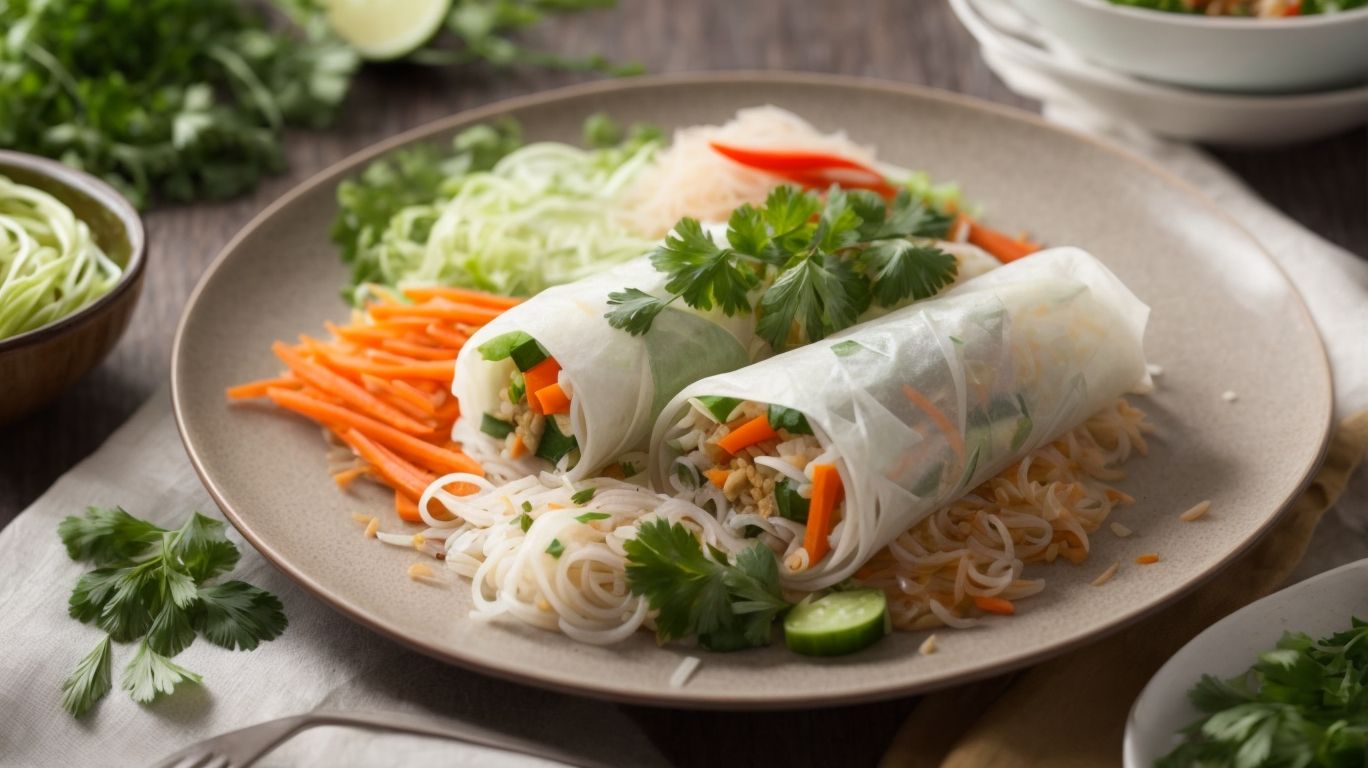
Credits: Poormet.Com – Peter Lopez
Upon completion, the vibrant and flavorful vermicelli noodles and rice paper rolls can be served fresh, accompanied by an assortment of Vietnamese spring rolls, lush vegetables, fragrant herbs, crisp butter lettuce, and delectable dipping sauces.
For a stunning presentation, arrange the vermicelli noodles and rice paper rolls on a large platter, interspersed with colorful vegetables like julienned carrots, cucumbers, and bell peppers. Iceberg lettuce leaves can be used as a base to showcase the rolls while also providing a cool, crunchy texture. Transform the accompanying dipping sauces into small dipping bowls, placing them strategically around the platter for easy access.
How to Serve the Dish?
To serve the dish of vermicelli noodles and rice paper rolls, arrange the components elegantly on a platter, complemented by Vietnamese spring rolls and a selection of tantalizing dipping sauces for a complete and satisfying culinary experience.
When arranging the vermicelli noodles and rice paper rolls, meticulous attention to detail is key. Start by neatly placing the cooked vermicelli noodles as a base on the platter, ensuring they are evenly spread. Next, delicately arrange the fresh ingredients like lettuce, herbs, cucumber, and carrots on top, adding a vibrant pop of colors. For the rice paper rolls, cut them into manageable bite-sized pieces for easy serving. Pair the dish with traditional Vietnamese spring rolls for an added authentic touch and offer an assortment of dipping sauces such as peanut sauce, fish sauce, and hoisin sauce to cater to varying taste preferences.
What Are Some Delicious Dipping Sauces to Pair with the Rolls?
Enhance the flavors of vermicelli noodles and rice paper rolls by offering a selection of delicious dipping sauces, such as the classic Vietnamese nước chấm, a tangy and savory accompaniment that elevates the dish with its balance of sweet, sour, salty, and spicy notes.
For a refreshing twist, consider a zesty peanut dipping sauce made with creamy peanut butter, soy sauce, lime juice, garlic, and a dash of honey. This sauce adds a nutty richness that complements the freshness of the rolls beautifully.
Alternatively, indulge in a spicy Sriracha mayo dip that brings a fiery kick to every bite. Mixing mayonnaise with Sriracha sauce creates a creamy yet spicy blend that tantalizes the taste buds.
Don’t overlook the traditional hoisin sauce, a thick and sweet condiment made from fermented soybeans, garlic, vinegar, and various spices. Its depth of flavor enhances the umami notes of the meat and veggies within your rolls.
Frequently Asked Questions
1. How do I properly cook vermicelli noodles for rice paper rolls?
To cook vermicelli noodles for rice paper rolls, start by bringing a pot of water to a boil. Add the noodles and cook for 3-4 minutes, stirring occasionally. Once they are soft, drain and rinse with cold water to stop the cooking process.
2. Can I make vermicelli noodles ahead of time for rice paper rolls?
Yes, you can cook the noodles ahead of time and store them in an airtight container in the fridge for up to 3 days. Just make sure to bring them to room temperature before using in your rice paper rolls.
3. What is the best way to prevent vermicelli noodles from sticking together?
To prevent vermicelli noodles from sticking together, add a small amount of oil to the pot of boiling water before cooking them. After cooking, rinse them in cold water and toss them with a bit of oil to prevent them from clumping.
4. How long do I need to soak rice paper rolls before adding the vermicelli noodles?
Generally, rice paper rolls only need to be soaked for 10-15 seconds in warm water before adding the vermicelli noodles. Make sure not to soak them for too long, as they will become too soft and difficult to roll.
5. Can I use different types of noodles for rice paper rolls instead of vermicelli?
Absolutely! While vermicelli noodles are the traditional choice for rice paper rolls, you can also use other types of noodles such as soba, udon, or even spaghetti. Just make sure to cook them according to package instructions before using.
6. How can I add more flavor to my vermicelli noodles for rice paper rolls?
To add more flavor to your vermicelli noodles, try cooking them in broth instead of water. You can also toss them with some soy sauce, sesame oil, and other seasonings before adding them to your rice paper rolls for an extra burst of flavor.

